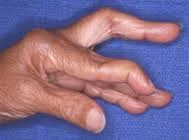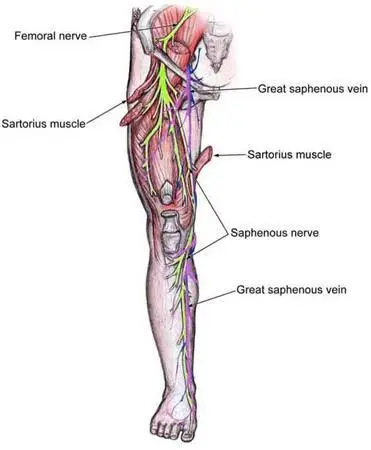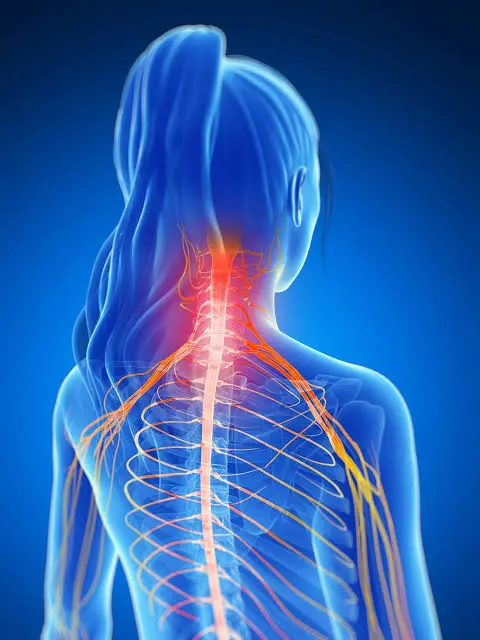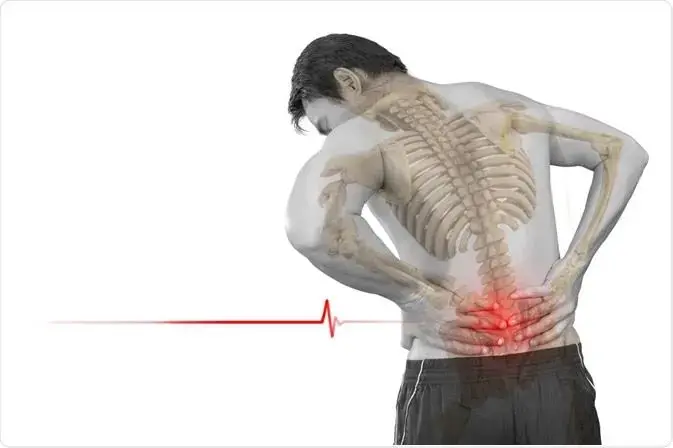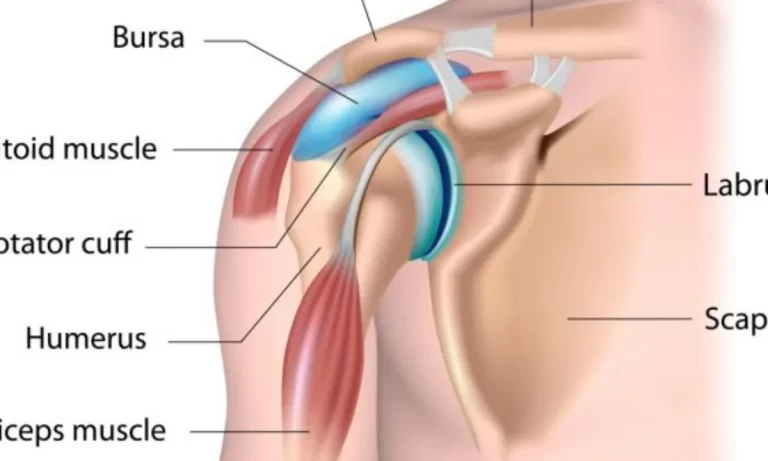Swan Neck Deformity
Table of Contents
What is a Swan Neck Deformity?
Swan-neck deformity (SND) is a finger deformity characterized by proximal interphalangeal joint (PIP) hyperextension and distal interphalangeal joint (DIP) flexion. There may also be reciprocal flexion of the metacarpal phalangeal joint (MCP).
A Swan-Neck Deformity is caused by an imbalance in the digit’s extensor mechanism. At the PIP joint, the deformity develops when there is a loss of extension at the distal phalanx or a tightening of the extensor mechanism at the proximal phalanx, both intrinsic and extrinsic.
A person with swan neck deformity may struggle to grasp objects or make a fist due to the bent fingers. Because the person has lost some fundamental function in the fingers and hand, a doctor may classify the limited motion as a disability.
Some people may confuse swan neck deformity with similar finger malformations. The duckbill deformity, which causes the thumb or fingers to form a 90-degree angle, is one of these similar malformations.
Although similar to other deformities, swan neck deformity is unique in that it can only affect the fingers because the thumb lacks a middle joint.
Which regions of the finger are affected?
Your fingers are made up of several parts. Many of these components, including your:
- Three phalanges (finger bones)
- Two interphalangeal joints located above the knuckle
- Tendons
- Ligaments
When your two interphalangeal joints point in unnatural directions and are unable to straighten into a flat position, you have SND.
The middle joint of your finger, for example, may hyperextend or point upward. This is known as the proximal interphalangeal (PIP) joint.
Your finger’s end joint may also flex or point downward. This is known as the distal interphalangeal (DIP) joint.
SND can only affect your fingers, not your thumb. Mallet finger is a condition that causes unusual bends in your thumb.
Causes of Swan Neck Deformity
The three most common causes of swan neck deformity are rheumatoid arthritis, cerebral palsy, and physical trauma.
Other possible explanations include:
- Mallet finger that has not been treated
- A finger fracture that has not healed properly
- Muscle spasms are caused by nerve damage.
- Strained hand muscles as a result of an injury
- The fibrous plate inside the hand is loose.
- Loose finger ligaments
- Finger tendons rupture
- Ehlers-Danlos syndrome and other genetic conditions
When the volar plate, a main ligament in the finger, becomes too loose, the finger joints frequently malfunction. As a result, the PIP joint points upward. It also affects your finger tendons, causing the DIP joint to curve downward. This is common if you have certain chronic health conditions, such as RA.
Because of the inflammation that RA causes throughout your body, particularly in the lining of your joints, it can affect your volar plate. This causes abnormal tissues to form, which can weaken your volar plate. Inflammation also affects your fingers’ bones, cartilage, tendons, and ligaments.
SND can develop as a result of other hand issues, such as injury. This may result in joint damage or tightened muscles, causing your fingers to bend in the SND position.
Pathophysiology
The extensor mechanism is typically injured first, with a central slip insult. As a result, the volar plate is lax and the triangular ligament is tight. The volar plate’s laxity is related to the PIP joint’s hyperextension, and the intrinsic contracture is related to the imbalance of forces on the PIP and DIP joints.
Symptoms of Swan Neck Deformity
Swan neck deformity only affects the hand’s fingers.
Depending on the stage of a person’s condition, their symptoms will typically change. They may include the following:
Finger bending:
Swan neck deformity may begin with the bending of just one finger joint or with a slight change in both.
Joint pain:
Pain when bending the finger joints is another early symptom of swan neck deformity.
Finger deformity:
The symptoms of swan neck deformity are visible in the later stages. The finger begins to resemble a swan’s neck as the PIP joint hyperextends and the DIP joint flexes.
Staging of Swan Neck Deformity
To classify the severity of a Swan-Neck Deformity, the Nalebuff classification system is most commonly used. This classification system is based on the stiffness of the PIP joint and the positions of the MCP joints.
- Type 1: The PIP joint is flexible in all MCP joint positions.
- Type 2: The PIP joint flexion is restricted in certain MCP joint positions.
- Type 3: The PIP joint flexion is limited regardless of MCP joint position.
- Type 4: The PIP joints of stiff and have a poor radiographic appearance.
Diagnosis
A visual examination of the hands and a review of the patient’s medical history are used to diagnose swan neck deformity. The doctor will examine the PIP joint for hyperextension and whether the tip of the finger is flexing inward to point toward the palm.
They will also evaluate the knuckle, PIP joint, and DIP joint’s active and passive range of motion. Active range of motion refers to the number of finger movements that a person can perform on their own. The full range of motion of a joint when subjected to external pressure is referred to as the passive range of motion.
To determine the extent of any damage, the doctor may order an X-ray of the finger or fingers.
Aside from determining whether a person has swan neck deformity, the doctor will look for any underlying conditions and causes, such as rheumatoid arthritis.
Complications
Incomplete correction of the deformity, recurrence, stiffness at the PIP joint, and loss of extension at the DIP joint due to overcorrection are all complications.
Treatments for swan neck deformity
Swan neck deformity can be treated in a variety of ways. There are two types of treatment available: surgical and non-surgical.
The sections that follow go over these options in greater depth.
Non-surgical alternatives
Non-surgical treatment focuses on restoring PIP joint flexibility and aligning the hand and fingers. When the PIP joint is repaired, the DIP joint is also repaired.
A physical or occupational therapist may provide hand therapy in some cases. Stretching, massage, and joint mobilization are used in this treatment to help restore function and alignment to the fingers and hands.
A doctor may prescribe special finger splints in addition to therapies or as a stand-alone treatment. When the PIP joints are at their most supple, these produce the best results.
Surgical options
Severe swan neck deformities, as well as those that do not respond to therapies and splints, will almost certainly necessitate surgery.
There are several surgical options available, including:
Repair of soft tissues
Soft tissue repair is a surgical procedure that focuses on the skin, tendons, and ligaments (soft tissues) near the finger’s middle joint. It is a type of surgery that your doctor may recommend for moderate-level SND, as it may not help in more severe cases.
The superficial sling is one type of soft tissue repair. This works on the volar plate to help it better restrain hyperextension of the middle joint of the finger while allowing for downward movement in the joint.
Arthroplasty of the PIP joint
SND may necessitate the replacement of a joint in your finger. PIP joint arthroplasty is when your doctor replaces your finger’s middle joint.
If your middle joint is stiff, your doctor may recommend this type of surgery. To restore finger movement, your doctor will also balance the soft tissues surrounding your new joint.
After a joint arthroplasty, you’ll notice that moving your fingers is much easier, and you may feel less pain. Remember that joint replacements can degrade over time.
Fusion of the fingers
Your doctor will fuse the joint in your finger so that it can no longer move. The DIP joint is the most commonly used. If this joint isn’t working properly, your doctor will advise you to have it replaced. You will be unable to move the joint after surgery, and it will remain straight.
Instead, your doctor may recommend a joint fusion in your PIP joint. Your doctor will fuse the joint in a bent position as a result of this procedure.
This procedure should alleviate pain in the affected finger joint.
Recovery
Physical and occupational therapies may be continued after surgery. These can help them gradually regain finger strength and mobility.
During recovery, a person may wear a splint.
A full recovery from swan neck deformity is not usually possible. Following surgery or therapy, most people experience a loss of mobility or stiffness in their fingers. However, this may not have an impact on a person’s quality of life and is frequently manageable in the long run.
Rheumatoid arthritis patients have poorer outcomes. Corrective surgery from a reliable source. However, positive outcomes are still possible.
Physiotherapy treatment of Swan Neck Deformity
Splints
Extension block splints aid in the correction of PIP joint hyperextension. A progressive extension splint can aid in the correction of DIP flexion deformity. For a few weeks, a ring splint, also known as a figure eight splint, is placed around the PIP joint to correct the deformity. A ring splint has the advantage of allowing the finger to be bent down freely.
Exercises for Stretching
Splinting can be combined with hand therapy for passive stretching. This treatment combination may improve flexibility and mobility at both the DIP and PIP joints. Straighten the affected finger gently and hold for 5 seconds at the tip of this finger extension. Perform 1 set of 10 repetitions 3 to 5 times per day to promote finger joint flexibility.
Exercises for Strengthening
Strengthening exercises help to maintain range of motion, strengthen weak muscles, and improve finger and hand function.
Exercises for Range of Motion
Finger passive range of motion is recommended to maintain finger flexibility and range of motion.
Flexion of the fingers
Place the elbow of the affected hand on a flat surface, such as a table, and straighten the forearm. One at a time slowly bends the fingers to the centre of the palm. Hold for 5 seconds at the highest point of each finger flexion. Do 1 set of 10 repetitions 3 times a day to improve finger flexion and range of motion.
Finger Extend
Place the affected hand on the table’s surface, palm flat and fingers extended, and stand in front of it. Lift one finger off the table at a time, hold for 5 seconds at the apex of the finger extension, and then relax.
3 times per day, perform 1 set of 10 repetitions. Picking up small objects with the injured finger and thumb promotes joint health and flexibility. Squeezing a rubber ball and holding each squeeze for 5 seconds will help the injured hand’s range of motion and flexibility.
Adduction and Abduction of the Fingers
Stand tall and bend your elbow to 90°. Bring the arm of the affected finger to the side of the body and spread the fingers as wide as possible. Hold the fingers together for 5 seconds before reuniting them. Perform 1 set of 10 repetitions 3 times per day to improve joint health and increase the circulation of oxygenated blood to the fingers.
Summary
Swan-neck deformity (SND) is a finger deformity caused by an imbalance in the digit’s extensor mechanism. It affects the proximal interphalangeal joint (PIP) hyperextension and distal interphalangeal joint (DIP) flexion, and may also involve reciprocal flexion of the metacarpal phalangeal joint (MCP). SND can cause difficulty in grasping objects or making fists due to bent fingers. It is unique to the fingers, as the thumb lacks a middle joint.
Common causes include rheumatoid arthritis, cerebral palsy, and physical trauma. Other possible explanations include untreated mallet finger, finger fractures, nerve damage, strained hand muscles, loose fibrous plate, loose finger ligaments, finger tendons rupture, and Ehlers-Danlos syndrome.
Symptoms include finger bending, joint pain, and finger deformity. Diagnosis involves a visual examination, medical history review, and X-rays. Complications may include incomplete correction, recurrence, stiffness at the knuckle, and other complications.
Swan neck deformity can be treated through surgical and non-surgical methods. Non-surgical treatments involve restoring PIP joint flexibility and aligning the hand and fingers. Physical or occupational therapists may provide hand therapy, stretching, massage, and joint mobilization. Special finger splints may be prescribed for supple PIP joints.
Severe deformities may require surgery, such as soft tissue repair, joint arthroplasty, or fusion of the fingers. Recovery from surgery may involve physical and occupational therapies, splints, and exercises for stretching and strengthening. However, full recovery is not usually possible, and rheumatoid arthritis patients may have poorer outcomes.
Physiotherapy treatments include splints, passive stretching exercises, strengthening exercises, and finger passive range of motion exercises. Flexion, finger extension, and adduction and abduction techniques can help improve joint health and flexibility.
FAQs
The three most common causes of swan neck deformity are rheumatoid arthritis, cerebral palsy, and physical trauma. Other potential causes include untreated mallet finger. A finger fracture that has not healed properly.
As the finger is flexed, the tendons may snap. This tendon snapping can be painful at times. As the deformity progresses, forming a fist may become difficult or impossible, and arthritis in the fingers may cause joint pain and motion difficulty.
The treatment for SND varies depending on the severity of the condition. Physical therapy (PT), occupational therapy (OT), and splints are examples of noninvasive treatments. Surgery is one of the more invasive procedures. These can range from minor soft tissue repair to more drastic measures such as finger joint replacement or fusion.
The swan-neck deformity is characterized by a bending in (flexion) of the finger’s base, a straightening out (extension) of the middle joint, and a bending in (flexion) of the outermost joint. Untreated mallet finger is another cause. A tendon injury is usually to blame.
Due to the disease’s hyper-flexibility, people with Ehlers-Danlos Syndrome (EDS), a genetic condition affecting connective tissue, have Swan Neck Deformity in their fingers.
References
- Lane, R. (2023, June 26). Swan-Neck Deformity. StatPearls – NCBI Bookshelf. https://www.ncbi.nlm.nih.gov/books/NBK525970/
- Swan-Neck Deformity. (n.d.). Physiopedia. https://www.physio-pedia.com/Swan-Neck_Deformity
- Swan Neck Deformity: Causes & Treatment | The Hand Society. (n.d.). https://www.assh.org/handcare/condition/swan-neck-deformity
- Fletcher, J. (2023, May 17). What to know about swan neck deformity. https://www.medicalnewstoday.com/articles/318642
- Silver, N. (2017, December 13). What Causes Swan Neck Deformity and How Is It Treated? Healthline. https://www.healthline.com/health/swan-neck-deformity
- Swan Neck Deformity. (n.d.). Default. https://www.wkhs.com/health-resources/wk-health-library/disease-condition-information/a-z/swan-neck-deformity
- Tan, S. (2021, December 5). What to Know About Swan Neck Deformity. WebMD. https://www.webmd.com/rheumatoid-arthritis/what-to-know-about-swan-neck-deformity
- What is Swan Neck Deformity? Symptoms, Causes, Diagnosis & Physiotherapy Treatment of Swan Neck Deformity. (n.d.). Cbphysiotherapy. https://cbphysiotherapy.in/condition/swan-neck-deformity

